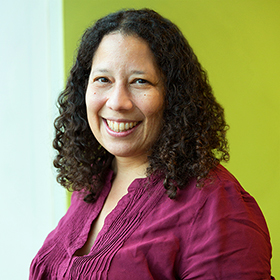Executive Summary: Field Building for Population-Level Change
Funders and practitioners are increasingly acknowledging that scaling individual organizations is insufficient to solve complex, evolving social problems. Achieving population-level change also often requires meaningful, intentional coordination across a field’s actors—known as “building the field” to elevate and sustain its collective practice.
Despite this growing agreement, few efforts of this sort are achieving impact at scale. In reality, field-building work is extremely challenging—and not just due to the complexity of social problems and the dynamic context in which field builders operate. A lack of shared understanding about what it takes to advance fields and mismatches between fields’ needs and common philanthropic practices are leading factors that thwart such efforts.
The Bridgespan Group spent six months studying the successes and struggles surrounding field building, in hopes of better understanding the chasm that often exists between its potential and its reality. Our research included an extensive literature review, analysis of more than 35 fields, and conversations with over 30 field leaders—all building on our direct experience working with funders and practitioners. This resultant report is intended to help equip all of us who believe that collaboration is key to solving our most pressing social problems with the common language, tools, and mindsets needed to achieve breakthrough results. Since relatively few fields have progressed to impact at scale, we also hope this work expands and emboldens perceptions of what field building is and can achieve.
To start, we define a “field” as a set of individuals and organizations working to address a common social issue or problem, often developing and using a common knowledge base. We define “field building” as the activities or investments that drive a field’s progress toward impact at scale. It is important to note that these definitions, and this report, refer exclusively to social change—not other types of “fields,” such as professional practices (e.g., law) or academic study (e.g., political science). Additionally, although there are two distinct methods of building a field’s capacity—strengthening organizations or strengthening connections and collaboration—this report is mainly concerned with the latter.
While every field’s journey is unique, our research found certain patterns in how fields progress—which can help leaders, researchers, intermediaries, and funders diagnose challenges and opportunities within their fields of focus. Further, although there is no foolproof playbook for field building, the specific activities most likely to accelerate a field’s trajectory tend to correlate with specific points of its progress.
These activities constitute the what of field building. Just as important to success, if not more so, is the how. In our conversations with funders and our review of fields that achieved population-level change (or close to it), funders consistently noted that how they did the work was a major factor in their success, or lack thereof. One critical dimension is whether the work is grounded in equity. Our research found that a pitfall of many field-building efforts to date has been the exclusive leadership of a few funders and field leaders instead of inclusive leadership with seats at the table for those closest to the work—to the problem—and likely, to the solution. As john a. powell (lowercase deliberate), director of the Belonging & Othering Institute at UC Berkeley, asserts in his theory of targeted universalism, there is no chance of achieving population-level change without designing solutions that serve the most marginalized.1 Doing so requires that any approach to field building is inclusive of diverse identities and viewpoints.
In these equity-based efforts and more broadly, funders play a critical role in creating the conditions in which all field builders can thrive. Our research surfaced a set of key principles for funders:
- Take a holistic view: A big-picture lens that considers all actors in a field, including other funders, as well as related fields, systems, and movements, makes it possible to see connection points with other efforts that could enable or hinder progress.
- Balance being proactive and being reactive: Pursuing both efforts that “till the soil” to create conditions for change and those that capitalize on ripe “moments in time” unlocks the greatest potential for impact.
- Problem-solve through inclusive decision making: Empowering fellow travelers within the field, especially those closest to the problem, to co-lead and co-create solutions enables lasting change.
- Commit to the long-term: Funding the work over an extended period (often at least a decade) enables the deep relationship building that powers field-based change and allows for the nonlinear progress that defines nearly every field success story.
"How Field Catalysts Galvanize Social Change"
Transformative Scale InitiativeOur conversations with funders affirmed a widespread desire to lean into these principles. Likewise, practitioners we spoke to viewed them as critical in order for field-building efforts to enhance their work.
However, translating these principles into effective and sustained practice is a challenge because it requires evolving current norms in philanthropy. To that end, we hope this report serves as a launchpad for further reflection and discussion among us all. We look forward to continuing to collaborate in pursuit of our ultimate shared aspiration: a society characterized by equity and justice for all.




